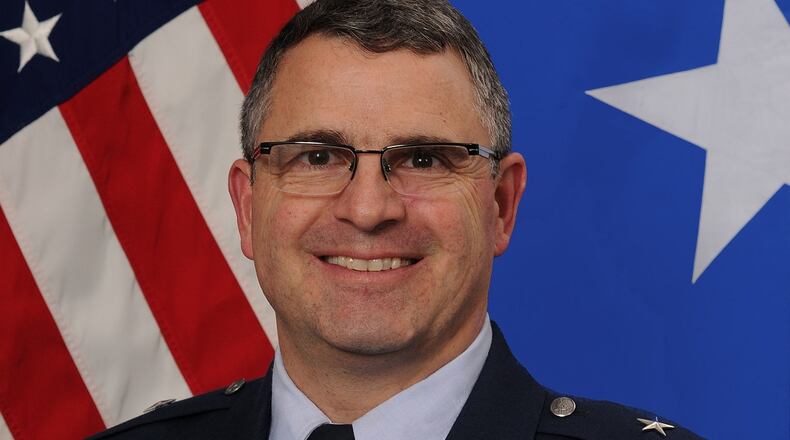Brig. Gen. William T. Cooley, now a high-level officer at the Missile Defense Agency, was named to lead AFRL, which employs thousands of scientists and engineers working on the development of cutting-edge warfighting technology.
He will take over the top post from Maj. Gen. Robert D. McMurry, named in September to lead the Air Force Life Cycle Management Center, also headquartered at Wright-Patterson. McMurry has had little time in the job at AFRL, taking over the post in May. He was tapped to lead AFLCMC when Lt. Gen. John F. Thompson was nominated to become the commander of the Air Force Space and Missile Systems Center at Los Angeles Air Force Base, Calif.
The transitions were expected to take place in 2017, said Wright-Patterson spokeswoman Marie Vanover.
Credit: DaytonDailyNews
At AFRL, Cooley will lead about 10,000 military personnel and civilian employees at nine directorates, four of which are located at Wright-Patterson — Aerospace Systems, Materials and Manufacturing, Sensors and the 711th Human Performance Wing that includes the Air Force School of Aerospace Medicine.
AFRL has a more than $4 billion budget.
Currently, Cooley is program executive for programs and integration at the Missile Defense Agency at Redstone Arsenal in Alabama.
The Afghanistan veteran with a 28-year military career had his first Air Force assignment at Wright-Patterson in the early 1990s as a project manager of space power programs. He also earned a doctorate in engineering physics at the Air Force Institute of Technology in 1997.
A transition date has not been announced.
About the Author

